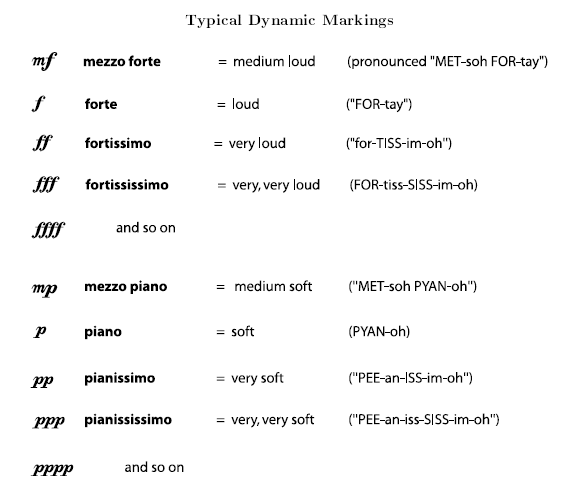Sounds, including music, can be barely audible, or loud enough to hurt your ears, or anywhere in between. When they want to talk about the loudness of a sound, scientists and engineers talk about amplitude (Section 3.1.3). Musicians talk about dynamics. The amplitude of a sound is a particular number, usually measured in decibels, but dynamics are relative; an orchestra playing fortissimo is going to be much louder than a single violin playing fortissimo. The exact interpretation of each dynamic marking in a piece of music depends on:
- comparison with other dynamics in that piece
- the typical dynamic range for that instrument or ensemble
- the abilities of the performer(s)
- the traditions of the musical genre being performed
- the acoustics of the performance space
Traditionally, dynamic markings are based on Italian words, although there is nothing wrong with simply writing things like "quietly" or "louder" in the music. Forte means loud and piano means soft. The instrument commonly called the "piano" by the way, was originally called a "pianoforte" because it could play dynamics, unlike earlier popular keyboard instruments like the harpsichord.

When a composer writes a forte into a part, followed by a piano, the intent is for the music to be quite loud, and then suddenly quite soft. If the composer wants the change from one dynamic level to another to be gradual, different markings are added. A crescendo (pronounced "cresh-EN-doe") means "gradually get louder"; a decrescendo or diminuendo means "gradually get softer".

- 5230 reads






